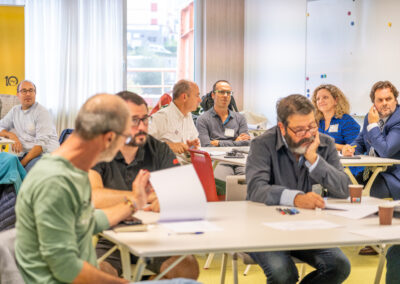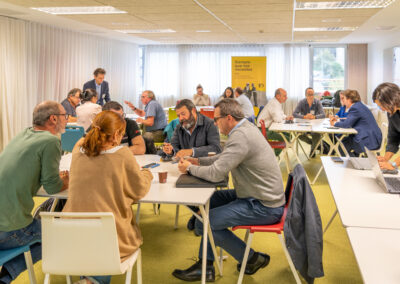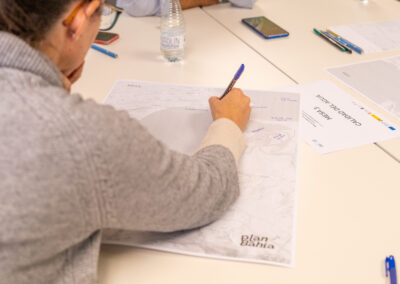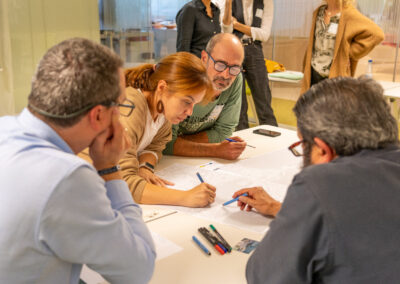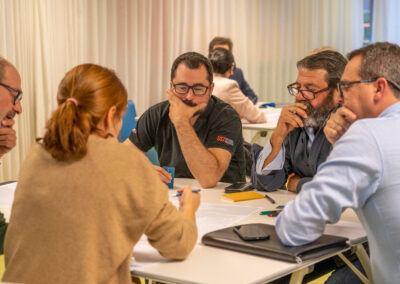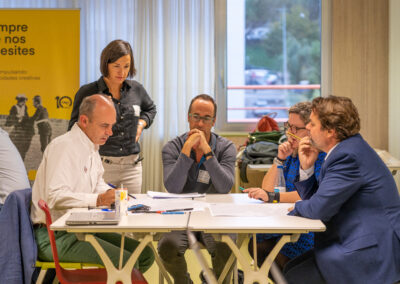Blue and Sustainable Tourism specialists participate in the first sectorial round table of Plan Bahia
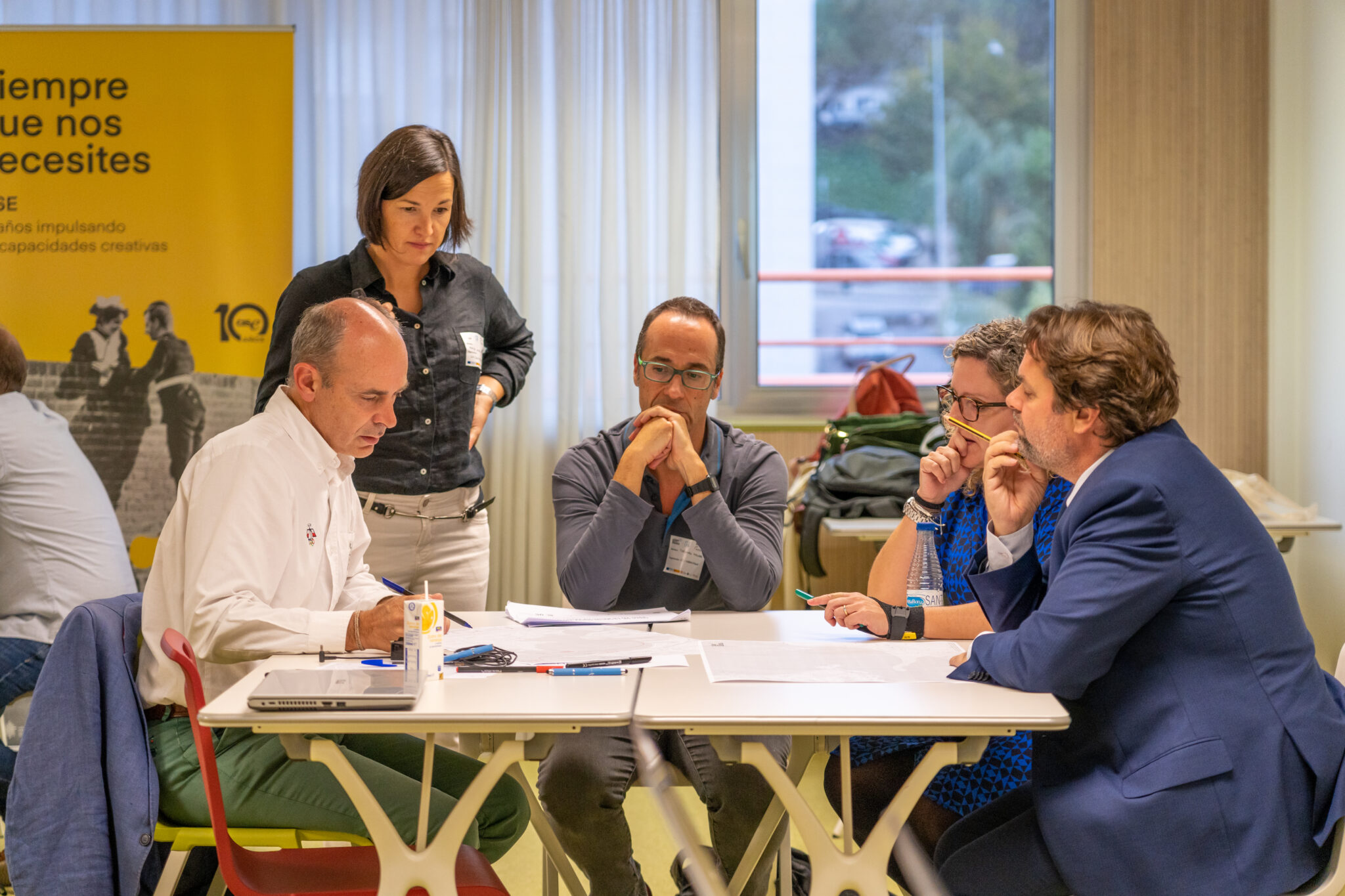
The two sessions held with institutions, companies, professionals and researchers have identified opportunities to improve sustainable tourism practices in the estuary.
The first working group organized within the framework of Plan Bahía analyzed the main challenges related to blue and sustainable tourism in the Bay of Santander. About thirty professionals from different institutions, companies, federations, scientific-technological centers and academics related to this field identified in two sessions -held on October 24 and 26 in the CISE spaces- the needs that must be addressed to ensure sustainable tourism practices in the environment of the Cantabrian estuary.
One of the main challenges identified is the need for real-time meteorological and oceanographic data, as well as medium- and long-term forecasts. Participants emphasized the importance of having specific details on waves, wind, tides and water quality, among other variables, and facilitating user access to this information. Measures were proposed, such as the creation of a digital platform to gather this relevant information and make it accessible to all users (tourists, companies, managers…) and the need to install measuring buoys at strategic points was raised, which would make it possible to know the precise conditions in real time.
Another challenge identified is related to real-time information on water quality and possible incidents, such as the presence of floating objects in the bay. To address this demand, several solutions were proposed, such as the implementation of a real-time monitoring system of water conditions, which would allow, among other things, to identify spills and assess the situation more accurately.
In addition, the need to develop a mobile application that allows users to report incidents was raised, which would contribute to a more agile and effective response, and the implementation of a floating trash cleanup plan to maintain the estuary in optimal conditions.
Information and infrastructures
The roundtable also highlighted the need for a comprehensive and easily accessible digital platform designed to serve a variety of users. The objective would be to provide up-to-date information and forecasts on variables crucial to ensure optimal enjoyment of beaches and coastal recreational areas, such as currents, tides, wave height and wind conditions. The tool would serve to identify and mark sensitive areas of the bay, including protected areas, species at risk, and areas allowed for dog access.
In addition, it was advocated to offer non-digital information for tourists and beach users (water quality and tide tables) either at the beaches themselves, at tourist information points or in reception areas,
Other challenges identified are related to the need to have public community facilitiesThe company’s facilities, such as recharging points for electric boats or docking points in the bay, and toilets along the seafront, or the improved monitoring and regulation of activities The company’s activities are likely to cause environmental and social impacts, such as anchoring in protected areas.
Regarding the improvement of bureaucracy in permit processing, solutions such as the creation of a one-stop shop and the development of a mapping of actors and competencies to simplify processes were proposed.
Climate change and awareness
Participants addressed the importance of analyzing the impacts of climate change on blue tourism and environmental conditions in the bay and noted that this may require adjustments to the bathing season and planning of services on the sandy beaches. Another key point is the need to raise awareness of the importance of preserving the coastal environment and the impacts of blue tourism on the economy and the environment.
The deseasonalization of tourism through diversification of the offer and better planning of off-season activities or the possibility of having a complete inventory of the naval, historical, cultural and heritage resources of the bay as a tourist asset were other topics of interest.
To estimate and disseminate the beach carrying capacity was highlighted as an essential element in the management of uses and visitor flow in real time, as well as strengthening governance to maintain coastal infrastructures and ensure the stability of the sandy areas throughout the year.
The working groups also stress the need to address problems such as siltation of navigation channels, sedimentation and beach formation in the inner Bay, and better regulation of the recreational boating fleet.
Finally, a more efficient management of blue tourism in the Bay of Santander also requires mastery of physical-environmental data. Professionals in the sector have detected that the practice of activities such as surfing, diving, sailing or rowing mainly demand accurate information on wind, swell and currents.
Solutions for integrated management
The conclusions reached at the Blue Tourism Roundtable, together with those obtained in other working sessions, will be a key element in the development of the Blue Tourism Plan. essential component for the preparation of the Integrated Diagnosis of the Bay of Santander. This assessment, which will also include in-depth technical analyses, will be the cornerstone for developing the proposal of solutions that address the challenges identified in the conservation and sustainable management of the estuary.
Plan Bahía’ is a research project coordinated by the Institute of Environmental Hydraulics of the University of Cantabria(IHCantabria) and funded by the Ministry of Science and Innovation and the Government of Cantabria through the Marine Sciences Program. Its objective is to draw up the Integrated Management Plan for the Bay of Santander, which will establish the collaboration mechanisms and the measures to be implemented so that the institutions that make up the Bay Committee can address the future actions to be developed within the framework of an Integrated Plan for the Management of the Bay.






